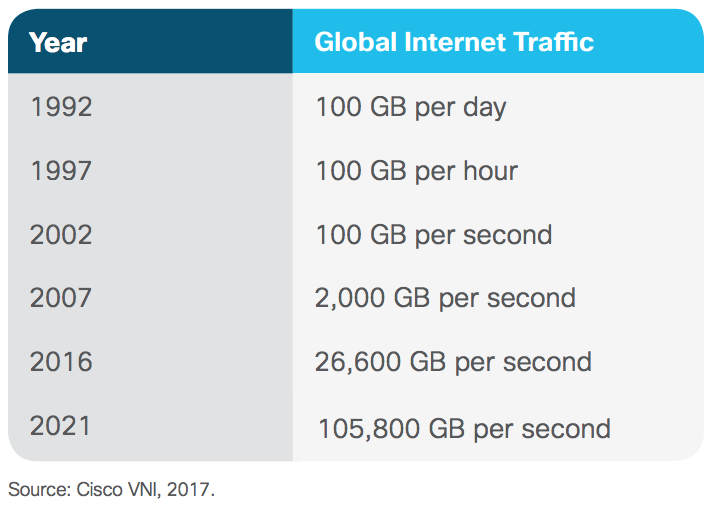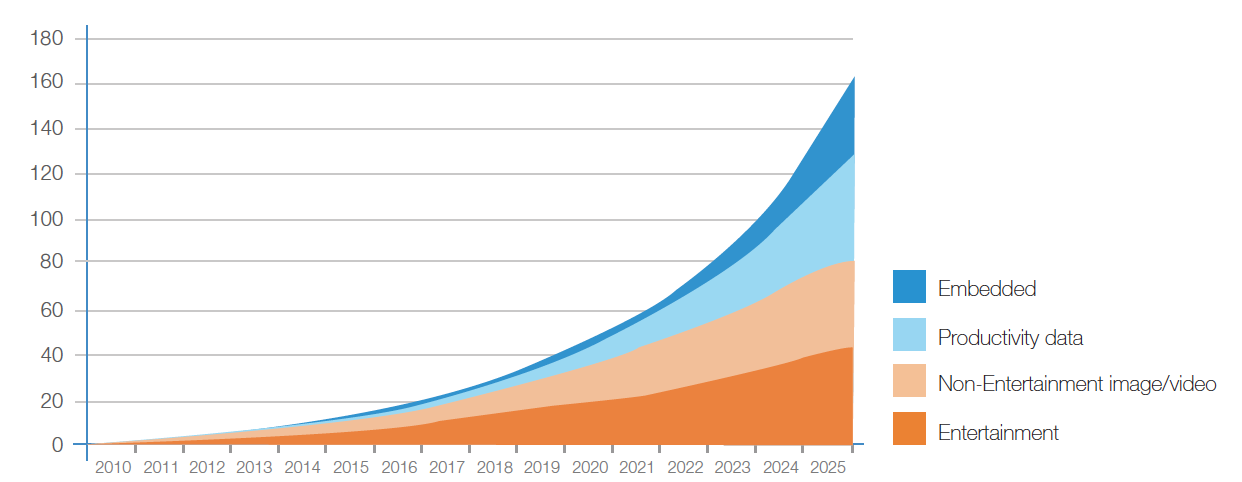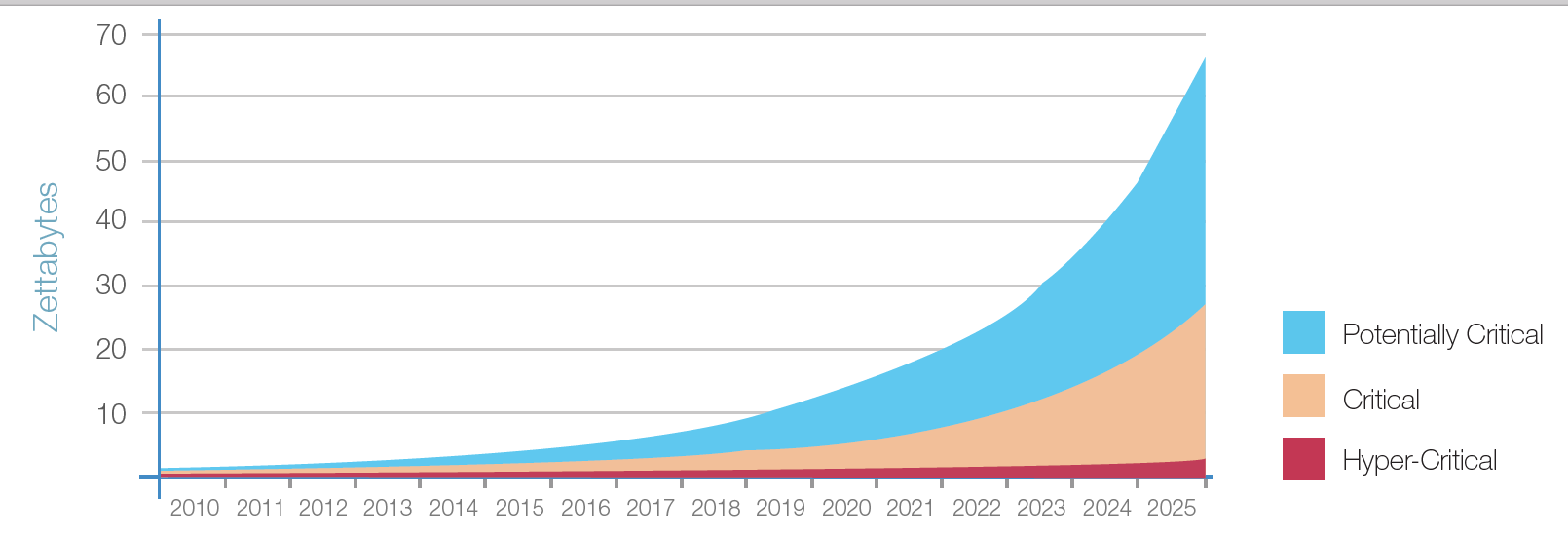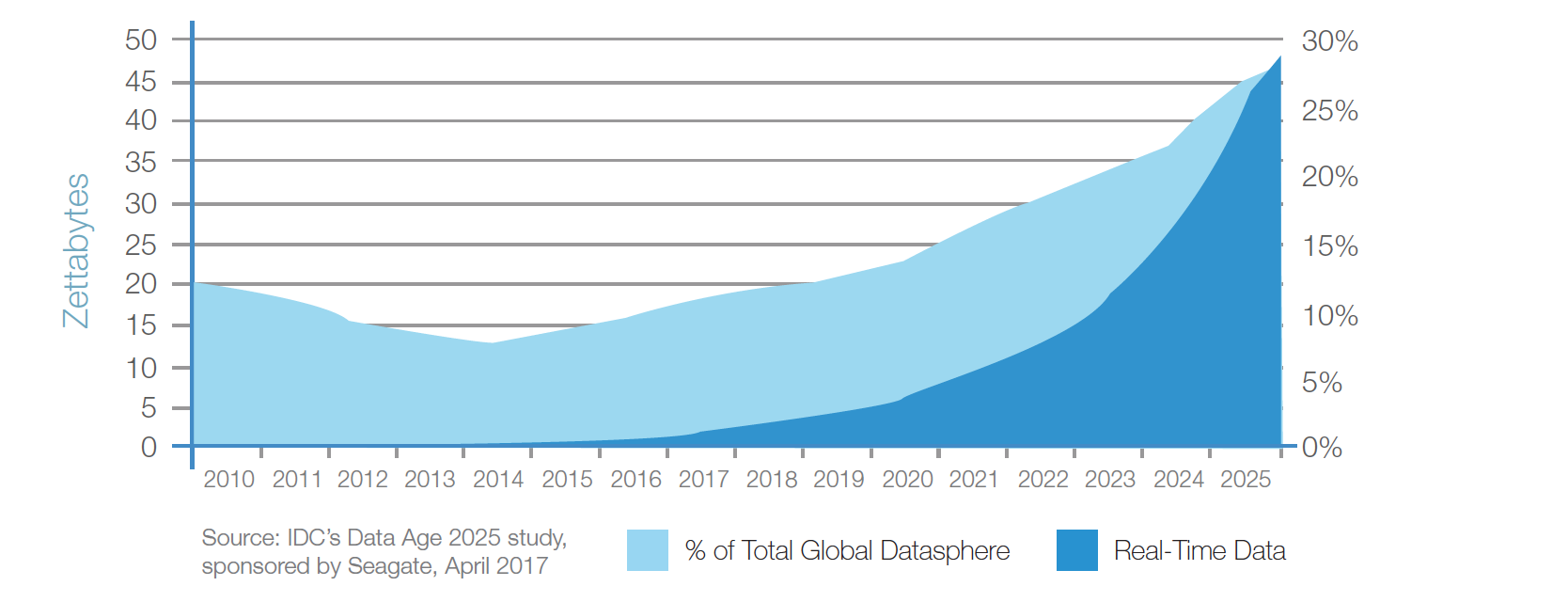The data age and its characteristics
There is more data generated each day than ever before. If I told you that you would have to sit in front of your TV or streaming device for more than five million years in order to watch all the video content that will “cross global IP networks each month in 2021” (3) you would probably not believe me and give me an astonished look. The world of data has become a critical pillar in human life and, over the past decades, has propelled us from an analogue age into a digital one. It can only be guessed at what the next transition will bring, however, the power and capabilities from using data could be “virtually limitless” (3).

If we are to compare total traffic generated on the internet in 1992 with estimates beyond 2020 differences are very stark. Back in the days, internet traffic globally amounted to 100 Gigabytes a day, whereas in 2021 a total data generation of 105,800 Gigabytes per second will be expected (see image 1). This contrast is even more visible when putting the numbers in per capita terms. At the turn of the century, per capita internet traffic was at a mere 10 Megabytes per month and, 20 years later in 2021, monthly per capita traffic is estimated to be a staggering 35 Gigabytes (1).
This tremendous growth in our ‘global datasphere’ is mainly due to a handful of underlying developments that foster the generation of data and change to change the characteristics of data consumption.
Types of devices generating data

The domain of electronic devices is has been subject to drastic change and, therefore, has had a great impact on the generation and consumption of data. Essentially, the data that we consume on a daily basis can be labelled according to the data type categories of embedded data, productivity data, non-entertainment image/video and entertainment data. As can be observed in the above chart (image 2), the share of data created by the ever-increasing number of embedded devices that constitute the so-called ‘Internet of Things’ is growing drastically and, by 2025, embedded data is deemed to be equal to “nearly 20% of all data created” (3).
Criticality of data

The emergence of critical data is another trend that has contributed to the steep growth of the global datasphere. The factor of criticality is a new dimension in data analysis and serves as an indicator of “the need for real-time processing and low latency, the ad hoc nature of usage, and the severity of consequences should the data become unavailable” (3). According to the International Data Corporation (IDC) (3), the share of critical data generated globally will constitute approximately 20% of all data in 2025 and, in the same time span, hypercritical data which bears “direct and immediate impact on the well-being of users” (3) will be growing at a 50% rate on an annual basis. Such developments will leave the business sector no other chance than enhancing their data capture and analytics infrastructure so that future real-world applications, which will mainly be based on extremely high reliability, bandwidth, and availability, can be made more secure.
Growth in data creation at the endpoint

The fact that the creation of data at the endpoint – the edge of the network – is growing steadily due the broad usage of devices such as PCs, smartphones, connected cars and wearables, further intensified the recent boost in global data consumption and will continue to do so more strongly in the future (see image 4). Especially, the realm of embedded devices that operate on the edge of the network will be a key driver of data and be “the largest component of this future growth” (3).
Increase in real-time data generation

Lastly, data is increasingly generated in real-time as a result of the expanding embedded IoT device sector that includes, for example, automated machines, security cameras, smart meters and smart cities (see image 5). The share of data that is created instantaneously will rise “at 1.5 times the rate of overall data creation” (3) and, consequently, businesses will have to rethink how and where they store data in the future as real-time data requires firms to focus on “low-latency responsiveness from enterprise edge storage, as well as from the endpoints themselves. “ (3).
In conclusion, one can say that as our ‘digital existence’ has expanded rapidly in the past two decades as a result of various trends surrounding data generation and consumption, businesses and network providers will feel the urge to create optimized storage solutions and come up with improved wireless technologies to handle the rising data demand on their networks. Currently, many key players in the telecommunications industry are working on the implementation of the fifth generation (5G) network that is dubbed to accommodate and support the data age we are living in. Its higher data rates and more reliable connection through low latency will serve a host of innovative use cases and it surely will enable us to cope with the transition to the next phase of our ‘digital existence’.
Bibliography:
- Cisco Visual Networking Index: Forecast and Methodology, 2016–2021
- https://www.ericsson.com/en/mobility-report/future-mobile-data-usage-and-traffic-growth
- IDC’s Data Age 2025 study, sponsored by Seagate, April 2017
